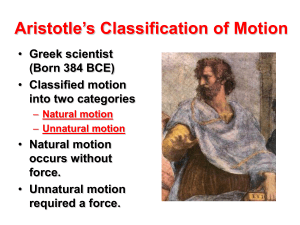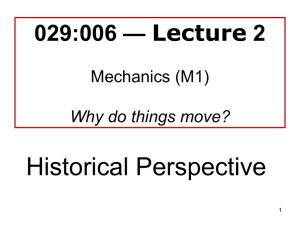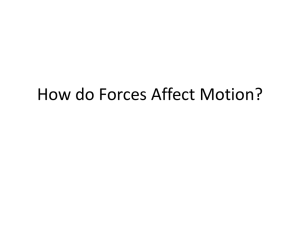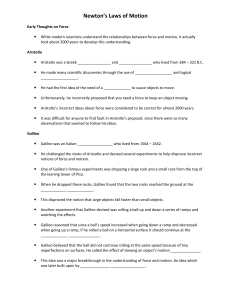08 Inertia and Mass
advertisement
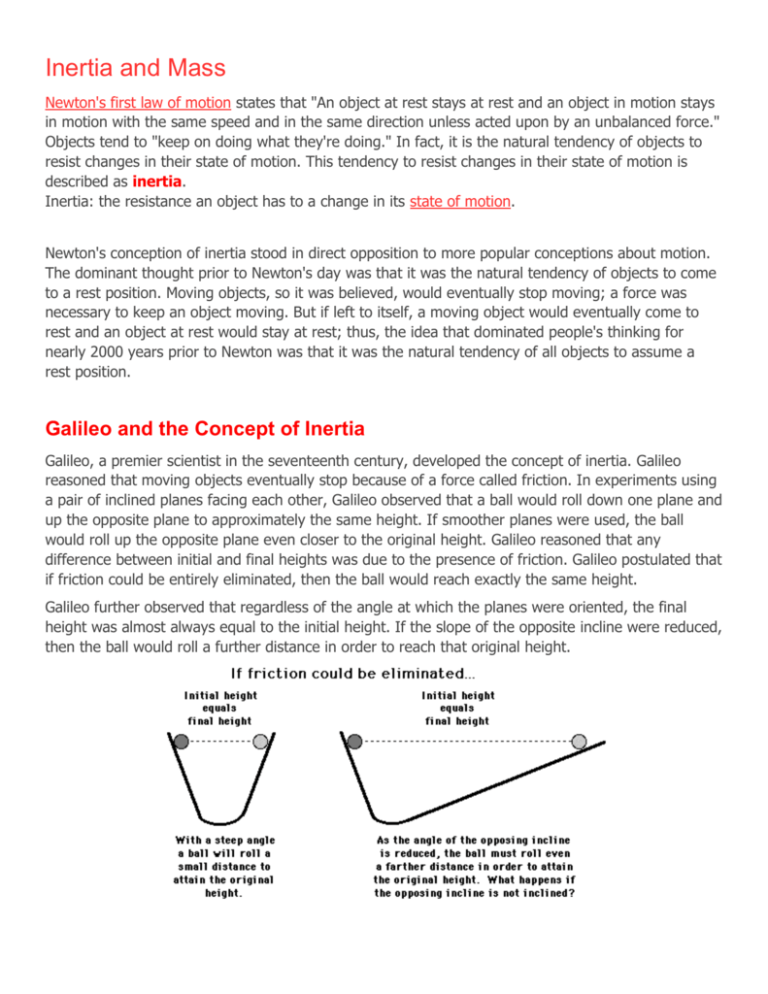
Inertia and Mass Newton's first law of motion states that "An object at rest stays at rest and an object in motion stays in motion with the same speed and in the same direction unless acted upon by an unbalanced force." Objects tend to "keep on doing what they're doing." In fact, it is the natural tendency of objects to resist changes in their state of motion. This tendency to resist changes in their state of motion is described as inertia. Inertia: the resistance an object has to a change in its state of motion. Newton's conception of inertia stood in direct opposition to more popular conceptions about motion. The dominant thought prior to Newton's day was that it was the natural tendency of objects to come to a rest position. Moving objects, so it was believed, would eventually stop moving; a force was necessary to keep an object moving. But if left to itself, a moving object would eventually come to rest and an object at rest would stay at rest; thus, the idea that dominated people's thinking for nearly 2000 years prior to Newton was that it was the natural tendency of all objects to assume a rest position. Galileo and the Concept of Inertia Galileo, a premier scientist in the seventeenth century, developed the concept of inertia. Galileo reasoned that moving objects eventually stop because of a force called friction. In experiments using a pair of inclined planes facing each other, Galileo observed that a ball would roll down one plane and up the opposite plane to approximately the same height. If smoother planes were used, the ball would roll up the opposite plane even closer to the original height. Galileo reasoned that any difference between initial and final heights was due to the presence of friction. Galileo postulated that if friction could be entirely eliminated, then the ball would reach exactly the same height. Galileo further observed that regardless of the angle at which the planes were oriented, the final height was almost always equal to the initial height. If the slope of the opposite incline were reduced, then the ball would roll a further distance in order to reach that original height. Galileo's reasoning continued - if the opposite incline were elevated at nearly a 0-degree angle, then the ball would roll almost forever in an effort to reach the original height. And if the opposing incline was not even inclined at all (that is, if it were oriented along the horizontal), then ... an object in motion would continue in motion... . Forces Don't Keep Objects Moving Isaac Newton built on Galileo's thoughts about motion. Newton's first law of motion declares that a force is not needed to keep an object in motion. Slide a book across a table and watch it slide to a rest position. The book in motion on the table top does not come to a rest position because of the absence of a force; rather it is the presence of a force - that force being the force of friction - that brings the book to a rest position. In the absence of a force of friction, the book would continue in motion with the same speed and direction - forever! (Or at least to the end of the table top.) A force is not required to keep a moving book in motion. In actuality, it is a force that brings the book to rest. Mass as a Measure of the Amount of Inertia All objects resist changes in their state of motion. All objects have this tendency - they have inertia. But do some objects have more of a tendency to resist changes than others? Absolutely yes! The tendency of an object to resist changes in its state of motion varies with mass. Mass is that quantity that is solely dependent upon the inertia of an object. The more inertia that an object has, the more mass that it has. A more massive object has a greater tendency to resist changes in its state of motion.






